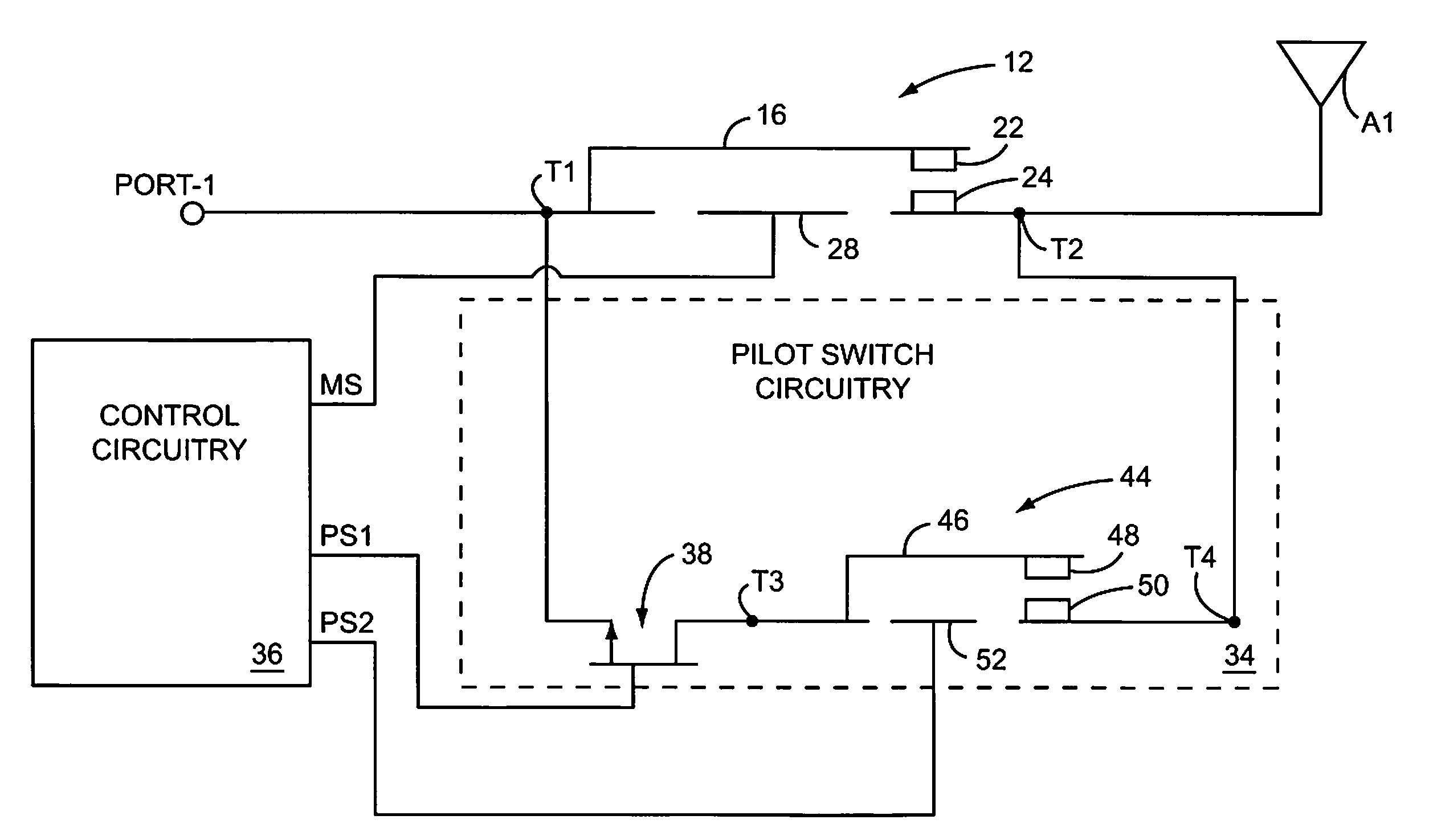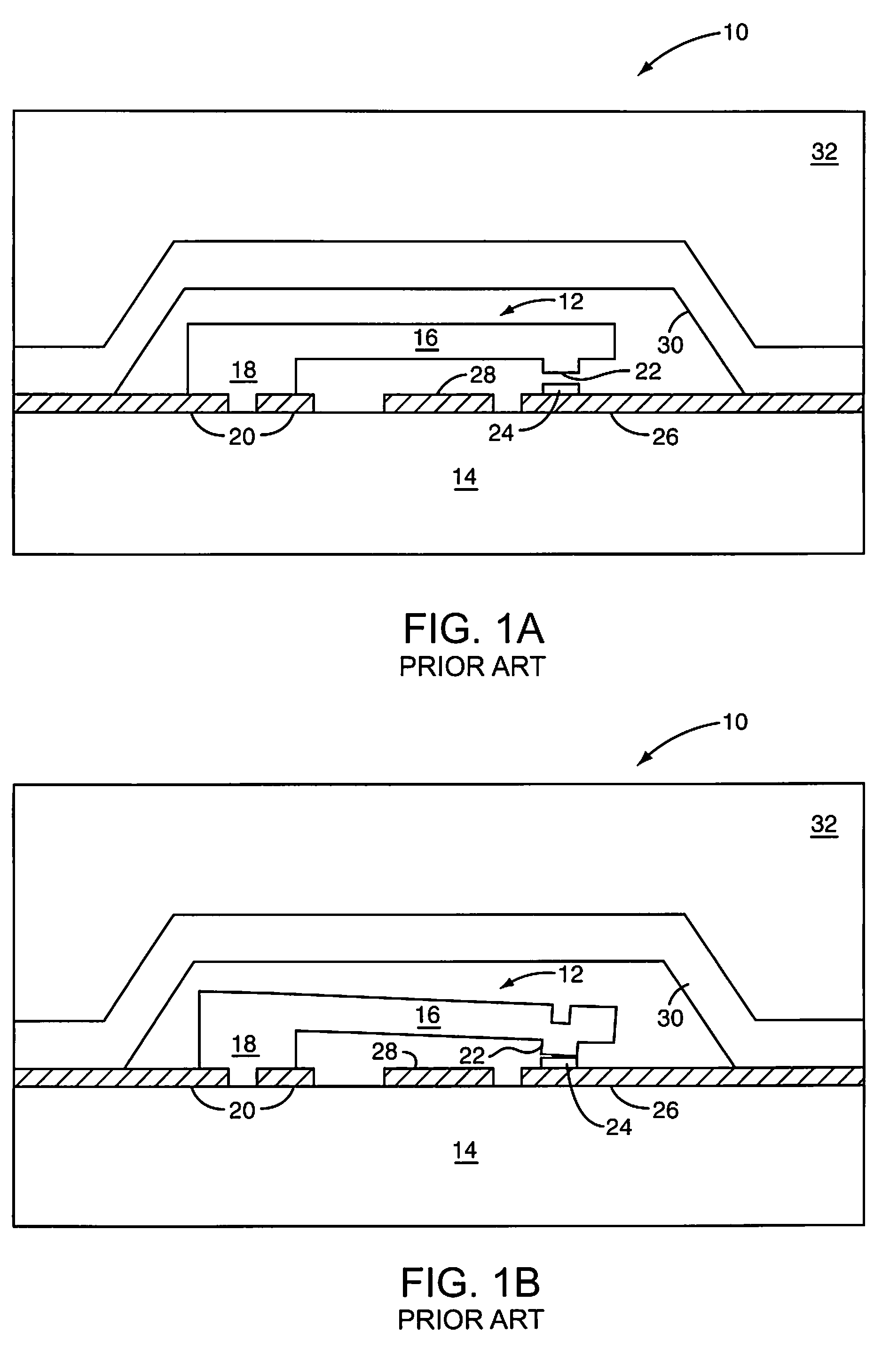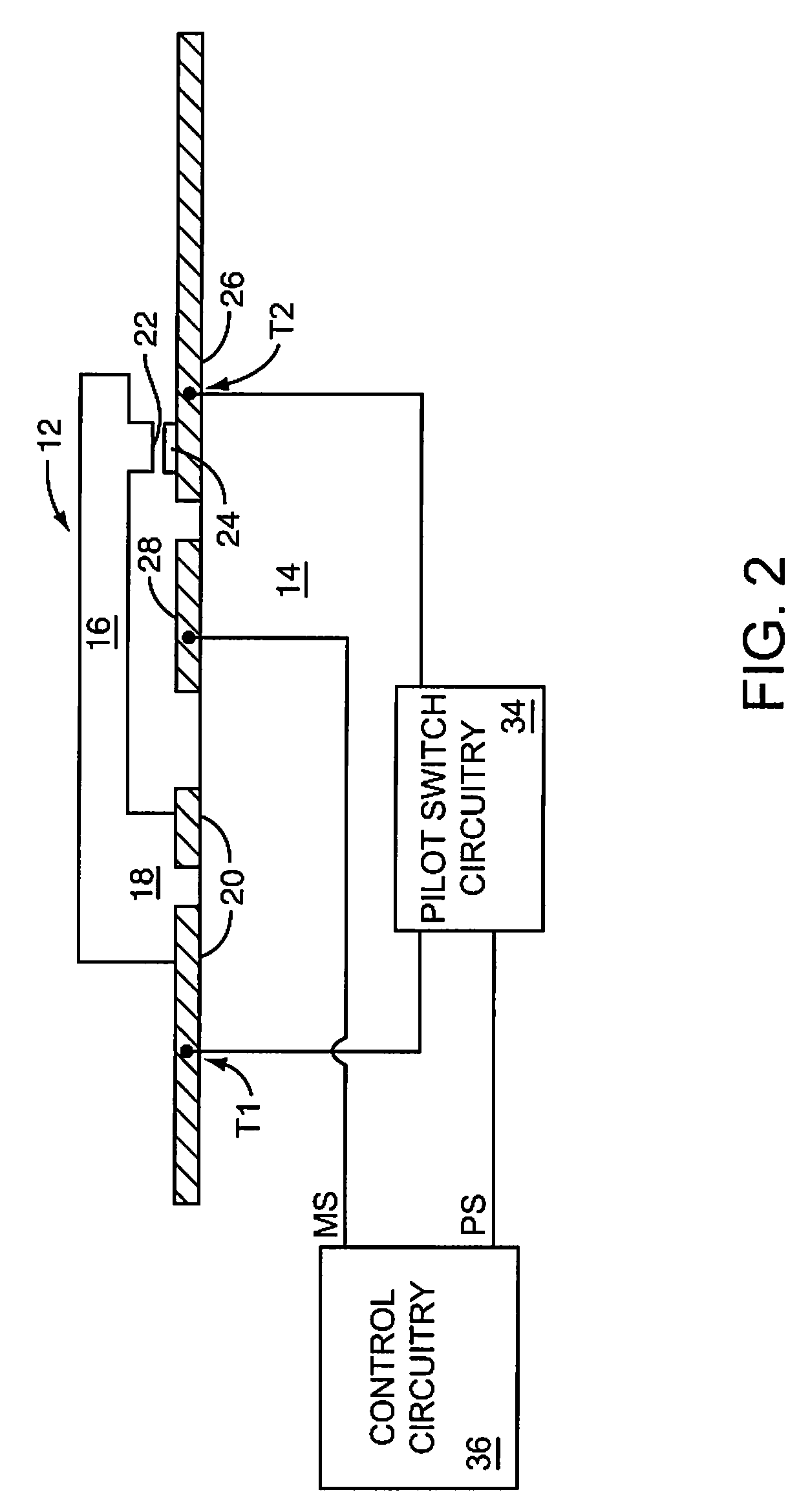Pilot switch
a pilot switch and switch technology, applied in circuit-breaking switches, circuit-breaking switches for excess currents, relays, etc., can solve the problems of parasitic capacitance, fet switches may alter rf signals, fet switches may generate higher insertion loss than is generated, etc., to reduce or eliminate arcing
- Summary
- Abstract
- Description
- Claims
- Application Information
AI Technical Summary
Benefits of technology
Problems solved by technology
Method used
Image
Examples
first embodiment
[0041]FIG. 5A shows the circuit of FIG. 3C with the shunt switch circuitry 54 coupled in parallel between the first terminal T1 and ground. The shunt switch circuitry 54 comprises a termination resistance R1, a shunt FET 56, and a first shunt MEMS switch 58. The termination resistance R1 is shown coupled between the first terminal T1 and a drain of the shunt FET 56. In light of the inherent impedance of the shunt FET 56, the termination resistance R1 may optionally be omitted to provide an alternate short circuit to ground. A source of the shunt FET 56 is coupled to a fifth terminal T5, and a gate is coupled to the control circuitry 36. The gate is fed from a first shunt switch control signal SS1.
[0042]The first shunt MEMS switch 58 has a cantilever 60 coupled between a sixth terminal T6 and a cantilever contact 62. As shown in FIG. 5A, the sixth terminal T6 is coupled to ground. A terminal contact 64 is coupled to the fifth terminal T5. An actuator plate 66 is coupled to the contro...
second embodiment
[0046]FIG. 5B shows the circuit of FIG. 3C with shunt switch circuitry 54 coupled in parallel between the first terminal T1 and ground. The shunt switch circuitry 54 comprises the termination resistance R1, the shunt FET 56, and the first shunt MEMS switch 58, all described in FIG. 5A. Additionally, the shunt switch circuitry 54 further comprises a second shunt MEMS switch 68 having a cantilever 70 coupled between a seventh terminal T7 and a cantilever contact 72. As shown in FIG. 5B, the seventh terminal T7 is coupled to the sixth terminal T6, which is coupled to ground. A terminal contact 74 is coupled to an eighth terminal T8, which is also coupled to the drain of the shunt FET 56 and the termination resistance R1. An actuator plate 76 is coupled to the shunt switch circuitry 54 to be operable by a third shunt switch control signal SS3.
[0047]In operation, and similar to the description for FIG. 5A, the shunt switch circuitry 54 of FIG. 5B may be operated independently from the pi...
PUM
 Login to View More
Login to View More Abstract
Description
Claims
Application Information
 Login to View More
Login to View More - R&D
- Intellectual Property
- Life Sciences
- Materials
- Tech Scout
- Unparalleled Data Quality
- Higher Quality Content
- 60% Fewer Hallucinations
Browse by: Latest US Patents, China's latest patents, Technical Efficacy Thesaurus, Application Domain, Technology Topic, Popular Technical Reports.
© 2025 PatSnap. All rights reserved.Legal|Privacy policy|Modern Slavery Act Transparency Statement|Sitemap|About US| Contact US: help@patsnap.com



